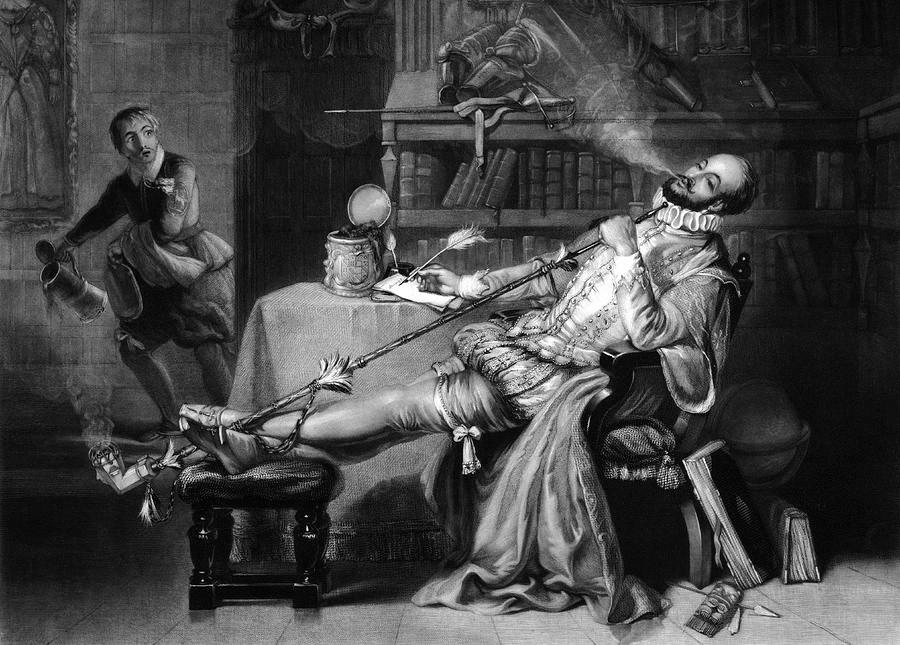 |
| "Raleigh's first pipe in England" - Wikipedia |
Anyone who's studied colonial history for any length of time knows that tobacco use was pretty well ubiquitous. Even casual archaeology of the time bears witness to the profusion of clay pipes.
The growing of tobacco as America's first cash crop is pretty well covered in a previous post so I won't get into too much detail here, but after the first terrible year or two, the early settlers in Jamestown grew tobacco as a way to support themselves in trade. Columbus had found tobacco cultivation and use already well established in central America, and although tobacco was among the first gifts offered him and his men, they didn't know what to do with it, and threw it away when they got back to their ships!
Some other factoids about tobacco:
Tobacco use was slow to catch on in Europe, but when it did, doctors hailed it as something of a cure-all.
 |
| Sharing snuff in "The Monk of Calais" (1780) |
Tobacco leaves were used as a type of currency, and supposedly helped fund the American Revolution.
Some religious groups did oppose the use of tobacco--the Puritans, for instance, and at least one pope threatened to excommunicate users of snuff. Some rulers outlawed it, while others were devoted users, themselves.
While native Caribbean and South American peoples are reported to have used tobacco in all its forms, from snuff to smoking rolled leaves (essentially, cigars), native North Americans are said to have reserved tobacco use to sacred and ceremonial use. Hence, the popular image of the peace pipe.
What surprised me:
The prevalence of growing tobacco from the beginning. Tobacco established the plantation culture in Virginia as the later cultivation of rice did in South Carolina.
The prevalence of tobacco as ... chewed! Many people found carrying a quid and tucking a piece in one's cheek (or actually chewing it) more convenient than pipe smoking.
And overall, though it probably shouldn't surprise me, I found myself amazed all over again at the changes in societal attitudes toward things like tobacco use, which despite the stigma in modern culture (especially some church cultures), was definitely a mainstay of both economic and social life in colonial times.
Reference and further reading:
http://academic.udayton.edu/health/syllabi/tobacco/history.htm
https://en.wikipedia.org/wiki/History_of_tobacco
http://archive.tobacco.org/History/Tobacco_History.html

Thanks for sharing Shannon. I didn't realize tobacco leaves were used as a type of currency.
ReplyDeleteBlessings, Tina
That surprised me too, Tina! Thanks for stopping by. :)
ReplyDeleteVery interesting information. Thanks for sharing.
ReplyDeleteThanks for commenting! :)
DeleteThat really is interesting about how tobacco leaves were used for currency. When did they stop using it for that?
ReplyDeleteI'm not really sure! It's possible that the lines between currency/barter have blurred so much that we can't really know for certain.
Delete